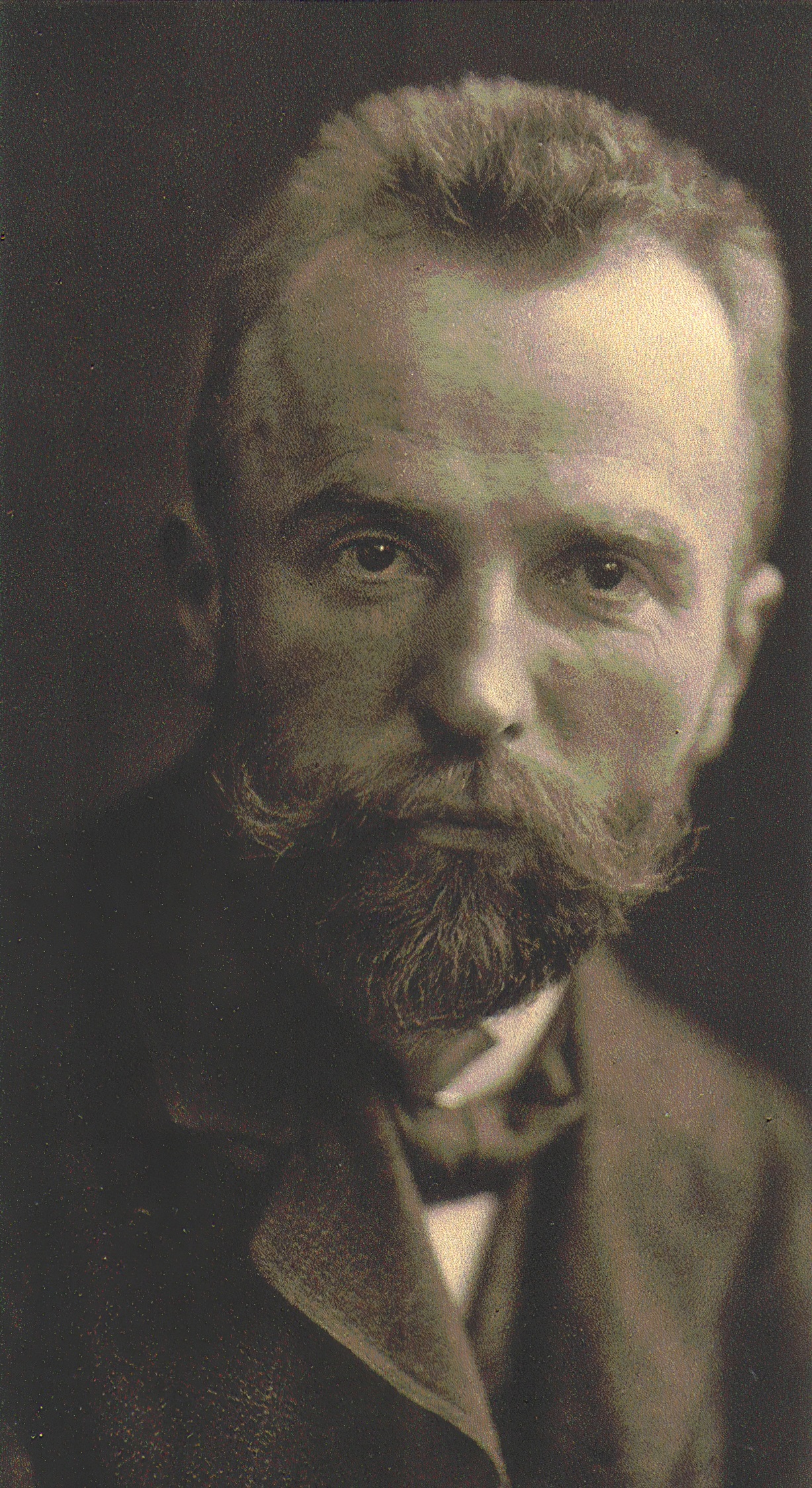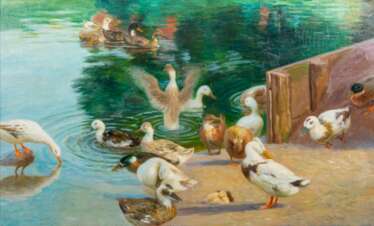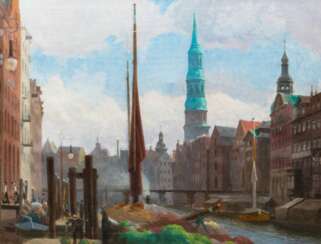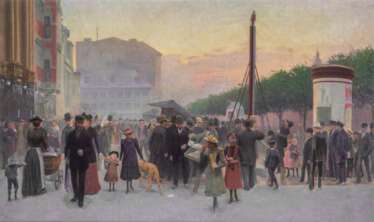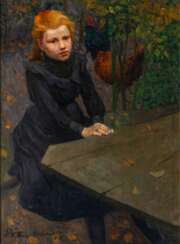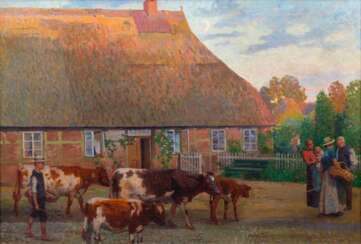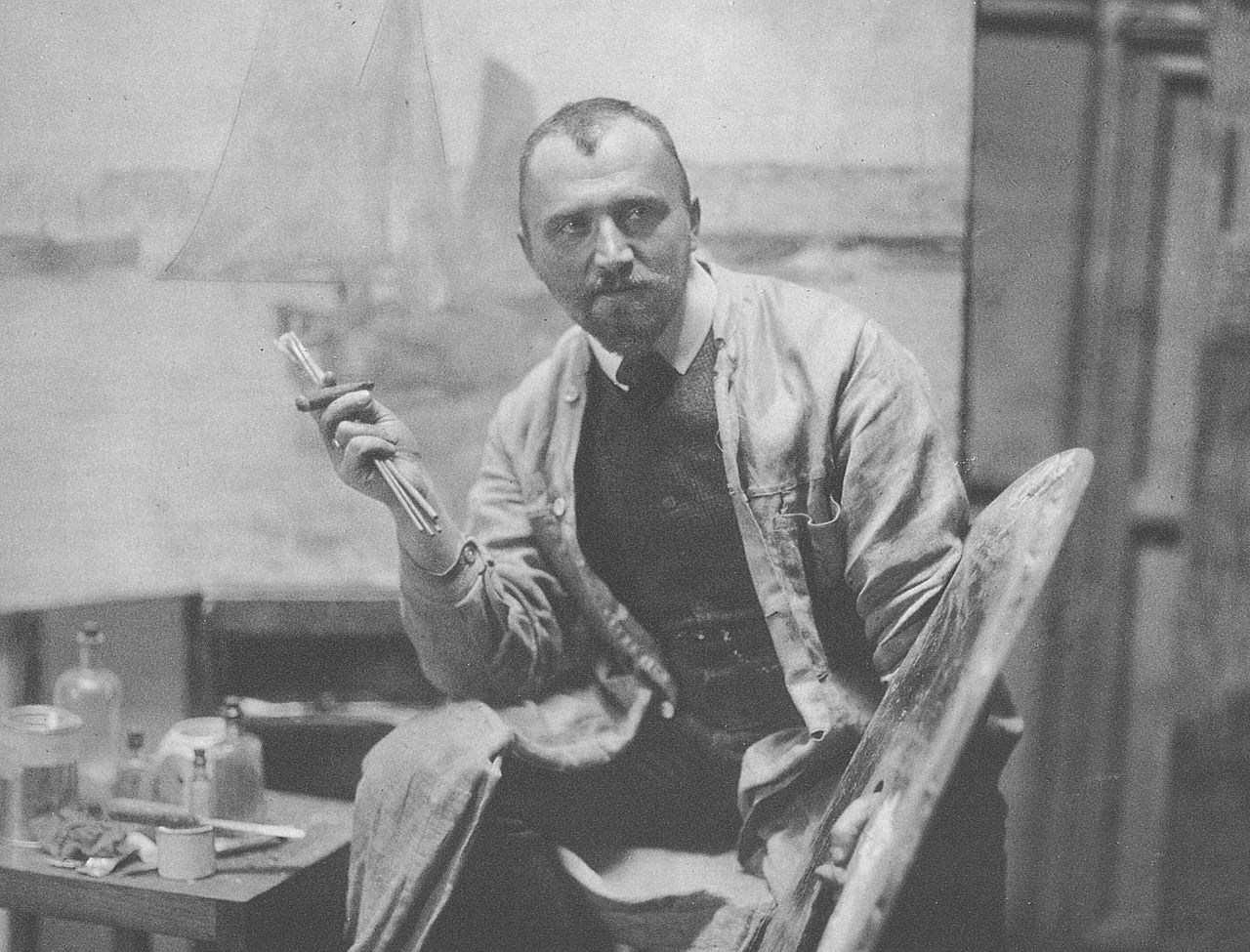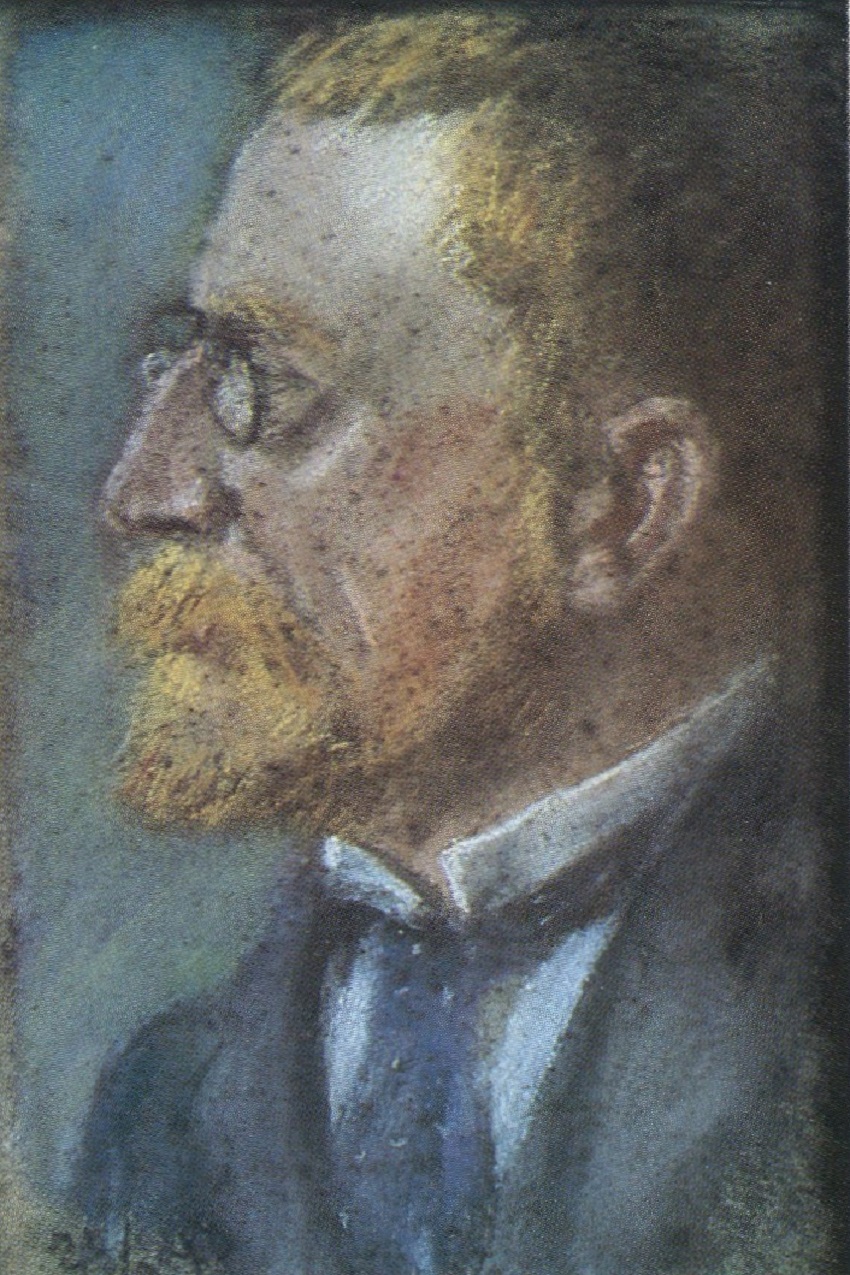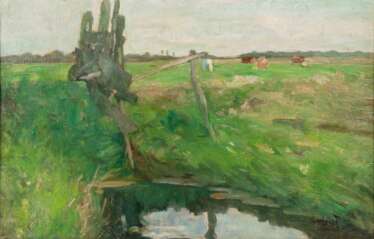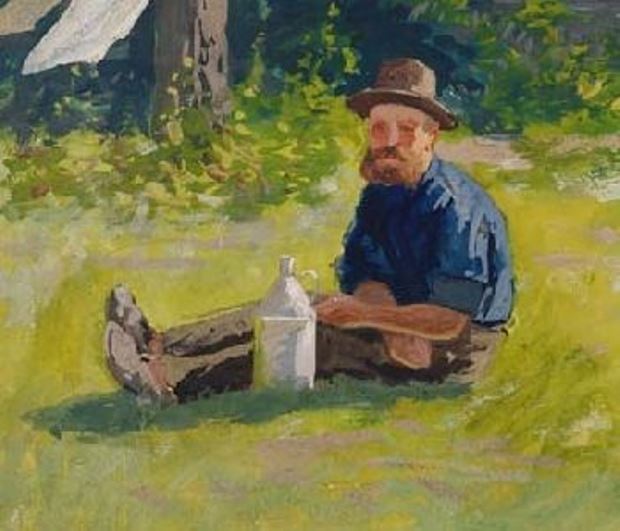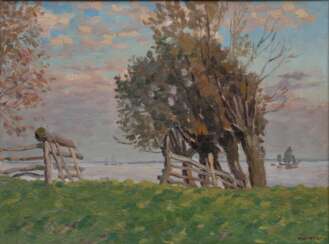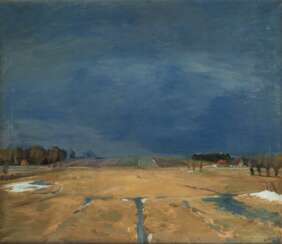
North German Impressionists — Kunst und Antiquitäten
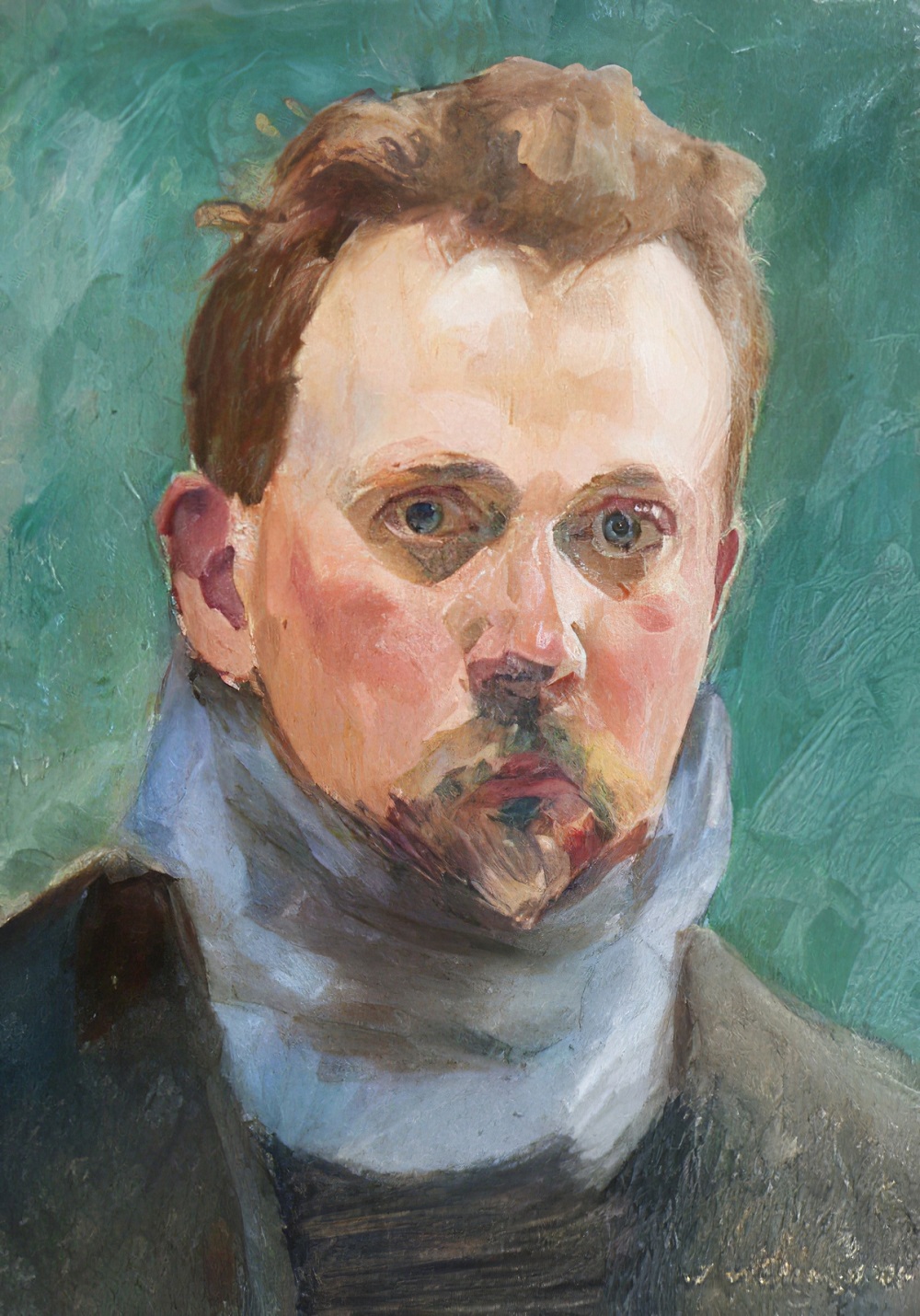
Julius von Ehren was a German post-Impressionist painter. He studied painting at the Academy of Fine Arts in Munich.
Julius von Ehren lived as a free artist in Hamburg since 1893. During study trips to the Lower Elbe region, he at first painted simple pictures of village life together with Thomas Herbst. He was particularly interested in interior lighting as well as village streets, landscapes and portraits.
Von Ehren was one of the young artists who were initially rejected by the established Hamburg art scene with their plein air paintings, often done in bright colours.

Julius von Ehren was a German post-Impressionist painter. He studied painting at the Academy of Fine Arts in Munich.
Julius von Ehren lived as a free artist in Hamburg since 1893. During study trips to the Lower Elbe region, he at first painted simple pictures of village life together with Thomas Herbst. He was particularly interested in interior lighting as well as village streets, landscapes and portraits.
Von Ehren was one of the young artists who were initially rejected by the established Hamburg art scene with their plein air paintings, often done in bright colours.

Julius von Ehren was a German post-Impressionist painter. He studied painting at the Academy of Fine Arts in Munich.
Julius von Ehren lived as a free artist in Hamburg since 1893. During study trips to the Lower Elbe region, he at first painted simple pictures of village life together with Thomas Herbst. He was particularly interested in interior lighting as well as village streets, landscapes and portraits.
Von Ehren was one of the young artists who were initially rejected by the established Hamburg art scene with their plein air paintings, often done in bright colours.

Julius von Ehren was a German post-Impressionist painter. He studied painting at the Academy of Fine Arts in Munich.
Julius von Ehren lived as a free artist in Hamburg since 1893. During study trips to the Lower Elbe region, he at first painted simple pictures of village life together with Thomas Herbst. He was particularly interested in interior lighting as well as village streets, landscapes and portraits.
Von Ehren was one of the young artists who were initially rejected by the established Hamburg art scene with their plein air paintings, often done in bright colours.

Julius von Ehren was a German post-Impressionist painter. He studied painting at the Academy of Fine Arts in Munich.
Julius von Ehren lived as a free artist in Hamburg since 1893. During study trips to the Lower Elbe region, he at first painted simple pictures of village life together with Thomas Herbst. He was particularly interested in interior lighting as well as village streets, landscapes and portraits.
Von Ehren was one of the young artists who were initially rejected by the established Hamburg art scene with their plein air paintings, often done in bright colours.
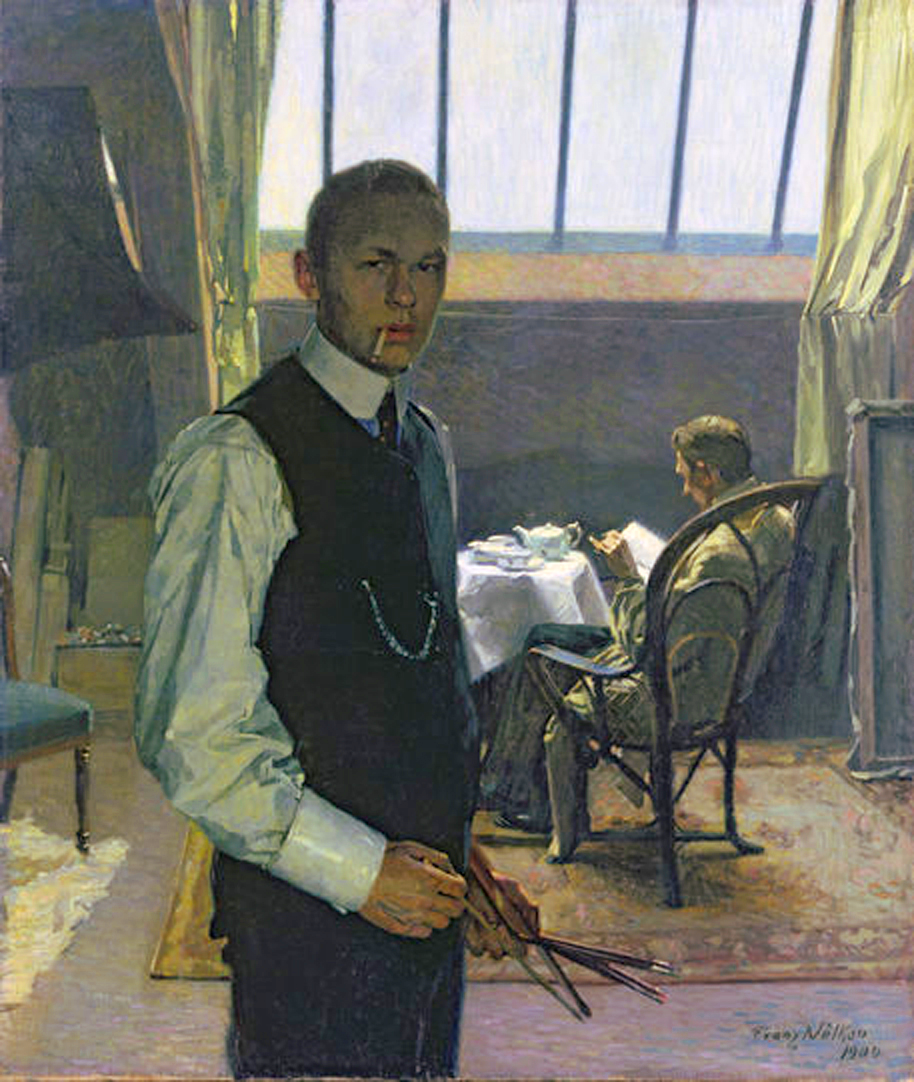
Franz Nölken was a German painter of the early twentieth century. He is known as a painter and a member of the Bridge art group, which became the founder of German Expressionism.
Franz Nölken, mastering a variety of techniques including oil, pastel and watercolor, excelled in portrait painting, as well as creating landscapes and still lifes. His work is characterized by virtuoso drawing and a desire to simplify his pictorial media. Conscripted during World War I, Nölken died in northern France just before the end of the war. He left an important mark on the history of Expressionism.

Franz Nölken was a German painter of the early twentieth century. He is known as a painter and a member of the Bridge art group, which became the founder of German Expressionism.
Franz Nölken, mastering a variety of techniques including oil, pastel and watercolor, excelled in portrait painting, as well as creating landscapes and still lifes. His work is characterized by virtuoso drawing and a desire to simplify his pictorial media. Conscripted during World War I, Nölken died in northern France just before the end of the war. He left an important mark on the history of Expressionism.
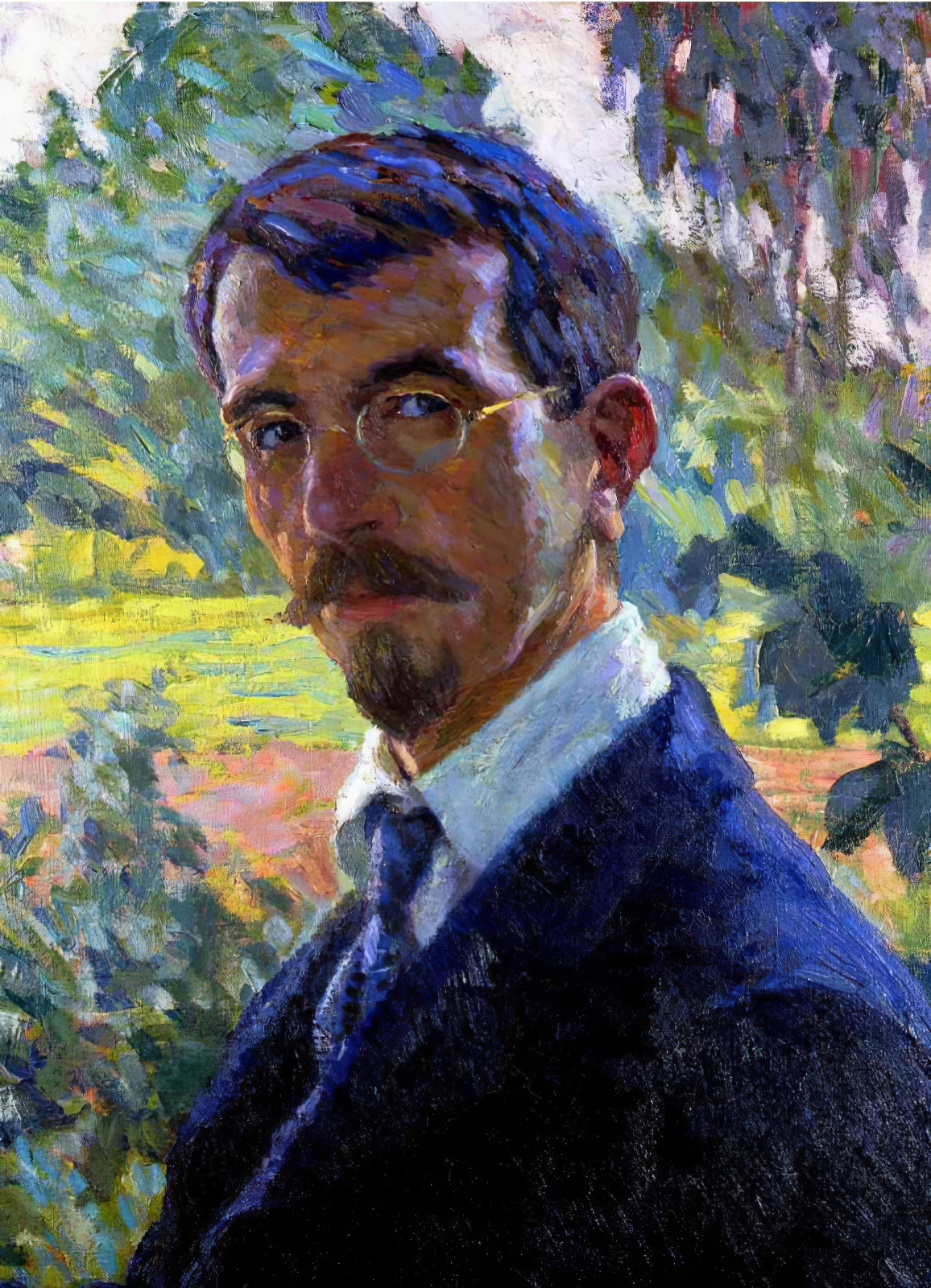
Wilhelm Heinrich Ernst Eitner was a German painter of the late nineteenth and first half of the twentieth centuries. He is known as an impressionist painter and teacher.
Eitner produced portraits, landscapes, and woodcuts in a style reminiscent of Japanese art. Despite initial rejection in German society of his impressionist style of painting, over the years he gained recognition and even the title "Claude Monet of the North." Eitner was a member of numerous art associations. His works are preserved in the Hamburg Kunsthalle.

Wilhelm Heinrich Ernst Eitner was a German painter of the late nineteenth and first half of the twentieth centuries. He is known as an impressionist painter and teacher.
Eitner produced portraits, landscapes, and woodcuts in a style reminiscent of Japanese art. Despite initial rejection in German society of his impressionist style of painting, over the years he gained recognition and even the title "Claude Monet of the North." Eitner was a member of numerous art associations. His works are preserved in the Hamburg Kunsthalle.

Wilhelm Heinrich Ernst Eitner was a German painter of the late nineteenth and first half of the twentieth centuries. He is known as an impressionist painter and teacher.
Eitner produced portraits, landscapes, and woodcuts in a style reminiscent of Japanese art. Despite initial rejection in German society of his impressionist style of painting, over the years he gained recognition and even the title "Claude Monet of the North." Eitner was a member of numerous art associations. His works are preserved in the Hamburg Kunsthalle.

Wilhelm Heinrich Ernst Eitner was a German painter of the late nineteenth and first half of the twentieth centuries. He is known as an impressionist painter and teacher.
Eitner produced portraits, landscapes, and woodcuts in a style reminiscent of Japanese art. Despite initial rejection in German society of his impressionist style of painting, over the years he gained recognition and even the title "Claude Monet of the North." Eitner was a member of numerous art associations. His works are preserved in the Hamburg Kunsthalle.

Wilhelm Heinrich Ernst Eitner was a German painter of the late nineteenth and first half of the twentieth centuries. He is known as an impressionist painter and teacher.
Eitner produced portraits, landscapes, and woodcuts in a style reminiscent of Japanese art. Despite initial rejection in German society of his impressionist style of painting, over the years he gained recognition and even the title "Claude Monet of the North." Eitner was a member of numerous art associations. His works are preserved in the Hamburg Kunsthalle.

Wilhelm Heinrich Ernst Eitner was a German painter of the late nineteenth and first half of the twentieth centuries. He is known as an impressionist painter and teacher.
Eitner produced portraits, landscapes, and woodcuts in a style reminiscent of Japanese art. Despite initial rejection in German society of his impressionist style of painting, over the years he gained recognition and even the title "Claude Monet of the North." Eitner was a member of numerous art associations. His works are preserved in the Hamburg Kunsthalle.

Wilhelm Heinrich Ernst Eitner was a German painter of the late nineteenth and first half of the twentieth centuries. He is known as an impressionist painter and teacher.
Eitner produced portraits, landscapes, and woodcuts in a style reminiscent of Japanese art. Despite initial rejection in German society of his impressionist style of painting, over the years he gained recognition and even the title "Claude Monet of the North." Eitner was a member of numerous art associations. His works are preserved in the Hamburg Kunsthalle.


